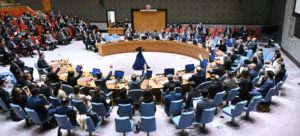The Distributed Workplace: Navigating the Future of Remote Work
The COVID-19 pandemic acted as a global catalyst, accelerating the shift towards remote work at an unprecedented pace. What was once considered a niche practice for certain industries and individuals has now become a mainstream phenomenon, reshaping the very fabric of the modern workplace. As we move further into the 21st century, the future of remote work is poised to evolve even more dramatically, driven by technological advancements, evolving employee expectations, and a growing emphasis on work-life balance.

Technological Advancements: Powering the Remote Revolution
One of the most prominent trends shaping the future of remote work is the continued integration of advanced technologies. Artificial intelligence (AI) and automation are streamlining communication, project management, and collaboration, allowing remote teams to operate with increasing efficiency. Virtual reality (VR) and augmented reality (AR) are also emerging as powerful tools for immersive remote meetings and training sessions, bridging the gap between physical and virtual workspaces. The development of more sophisticated collaboration platforms, with features like real-time translation and seamless file sharing, will further enhance the remote work experience, making it even more seamless and productive.
Evolving Expectations: Flexibility and Work-Life Balance
Beyond technology, the future of remote work is also being shaped by evolving employee expectations. A growing number of workers are prioritizing flexibility and autonomy, seeking roles that allow them to balance their professional and personal lives. Companies that embrace remote work are finding it easier to attract and retain top talent, as they can tap into a wider pool of geographically dispersed individuals. The emphasis on work-life balance is also driving a shift towards more flexible work schedules and asynchronous communication, allowing employees to work when they are most productive.
Challenges and Solutions: Maintaining Culture and Security
However, the future of remote work is not without its challenges. Concerns about maintaining company culture, fostering team cohesion, and ensuring effective communication are still prevalent. Companies are exploring innovative solutions to address these challenges, such as virtual team-building activities, regular online social events, and designated co-working spaces for remote employees. The development of robust cybersecurity measures is also crucial, as remote work increases the risk of data breaches and cyberattacks.
Hybrid Models and Digital Nomadism: The Future Landscape
Predictions for the future of remote work suggest a hybrid model will likely become the dominant approach, where employees split their time between working from home and the office. This model offers the flexibility of remote work while also providing opportunities for in-person collaboration and social interaction. Co-working spaces are also expected to play a more prominent role, providing remote workers with a sense of community and a professional work environment. Furthermore, the concept of “work from anywhere” is gaining traction, with a growing number of digital nomads embracing the freedom to work from different locations around the world. This trend is being facilitated by advancements in internet connectivity and the increasing availability of remote work tools.
A Flexible and Distributed Future: Redefining the Workplace
In conclusion, the future of remote work is dynamic and multifaceted, driven by technological innovation, evolving employee expectations, and a desire for greater flexibility. While challenges remain, the benefits of remote work, including increased productivity, improved work-life balance, and access to a wider talent pool, are undeniable. As companies and individuals continue to adapt to this changing landscape, the future of work will undoubtedly be defined by a more flexible, distributed, and technologically advanced approach.




















